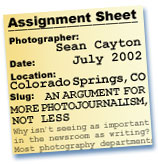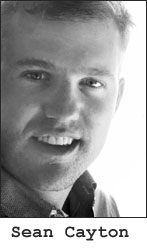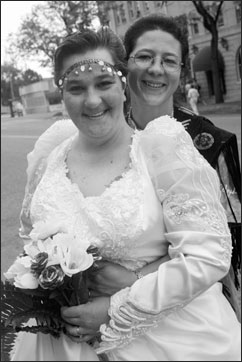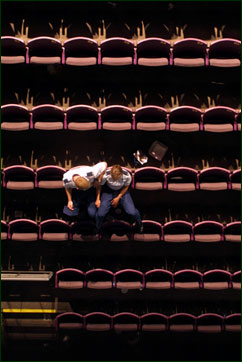 |
|
|
|
|
|
AN ARGUMENT FOR MORE
PHOTOJOURNALISM, NOT LESS Why isn't seeing as important in the newsroom as writing? Most photography departments today remain service bureaus. The everyday job of newspaper photographers is to fulfill the photo requests of their counterparts - the writers. It's expected that photographs be 'eye-catching' and graphic illustrations for the story. I think it's fair to say that few newspapers display pictures that actually tells the story. Instead, newspapers use photography to dress up the newsprint. Of course it depends on what kind of newsprint it is. For example, the business section of one of my local papers has a fondness for 'annual report' style portraits of corporate executives. Gels are often used to jazz up the backgrounds. In the sports section, there is a generous helping of practice shots on a slow news day. And the news sections are usually a hodgepodge of wire/celebrity photos, hurried pictures profiling some community-oriented subject, a few feature pictures of children and the occasional car wreck. Rarely, and I emphasize rarely, is there a story telling picture prominently displayed in any of its sections. And what little story telling is done is saved for the Sunday edition or a special section. The initiative to tell a story in pictures has all but disappeared from the landscape of newspaper photography in the U.S. But more to the point, the initiative to tell a story in pictures with journalistic insight has disappeared. Compelling picture stories are being told in other parts of the world. The New York Times, for example, recently published a picture story on its web site about a Muslim court in Nigeria that condemned a woman to death for adultery. Magnum photographer Martin Parr said in an interview in the August 2002 issue of Photo District News that photographers in the U.S. (and I take it that he includes newspaper photographers) are too considerate. His point? There are stories here that aren't being told. And, he says, he will take advantage of that neglect by U.S. photographers and work here in the coming years. The obvious question to me is why aren't newspaper photographers doing this sort of work? I think that answer lies somewhere between job security for photographers on staff at daily papers and the agenda of a newsroom that doesn't include serious photojournalism as part of its mission. When was the last time newspapers and, more to the point, newspaper photographers took a serious look at life in the U.S. en masse? The Civil Rights era comes to mind and also the work of Farm Securities Administration photographers like Gordon Parks. Robert Frank's book The Americans is another. But I'll concede that Frank or Parks and the other FSA photographer weren't newspaper photographers. And so what? Don't we
also live in interesting times?
Again, I believe that's a line of thinking that photographers too often accept at face value, and are compelled to repeat it over and over. The reality is far different.
There just is not a strong desire by newspapers to practice and by
definition to fund photojournalism here in the U.S. (It's interesting
to note that Europe seems to thirst for it.) By default that shapes the future of newspaper photography. Young photographers learn early on that to get a job they need five stylized portraits, five strong sports shots, five fancy features and 10 'hard news' photos along with the ability to make friends quickly. Nowhere in that mix is
there room for journalism, including knowledgeable investigative technique
and the ability to research in depth stories.
But, with very few exceptions, newspaper photographers have failed to take advantage of that opportunity and to help breathe new life into a dying profession. Sean Cayton http://www.caytonphotography.com
|
|||||


